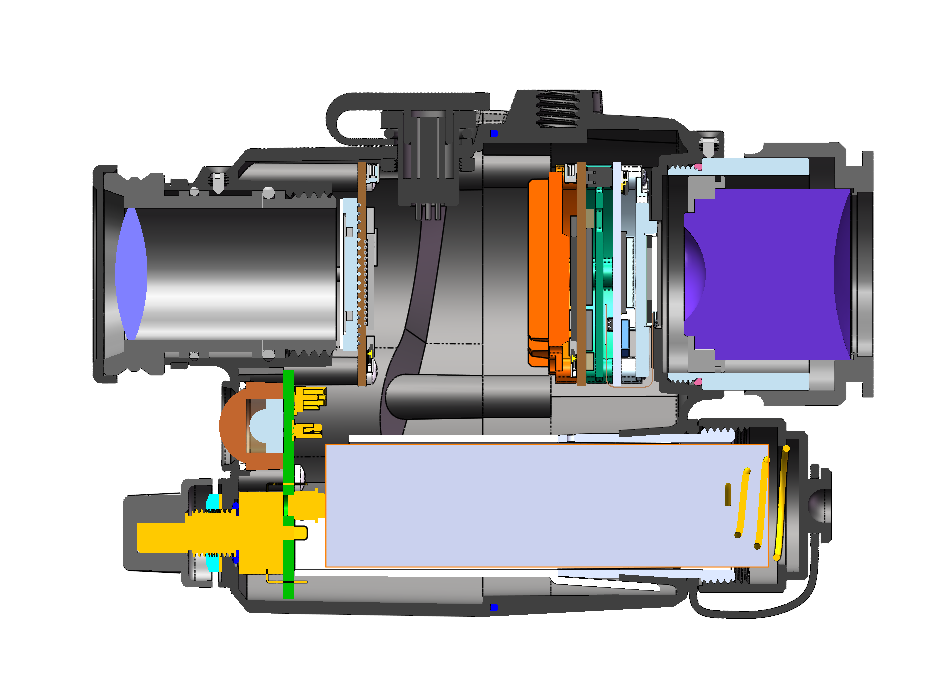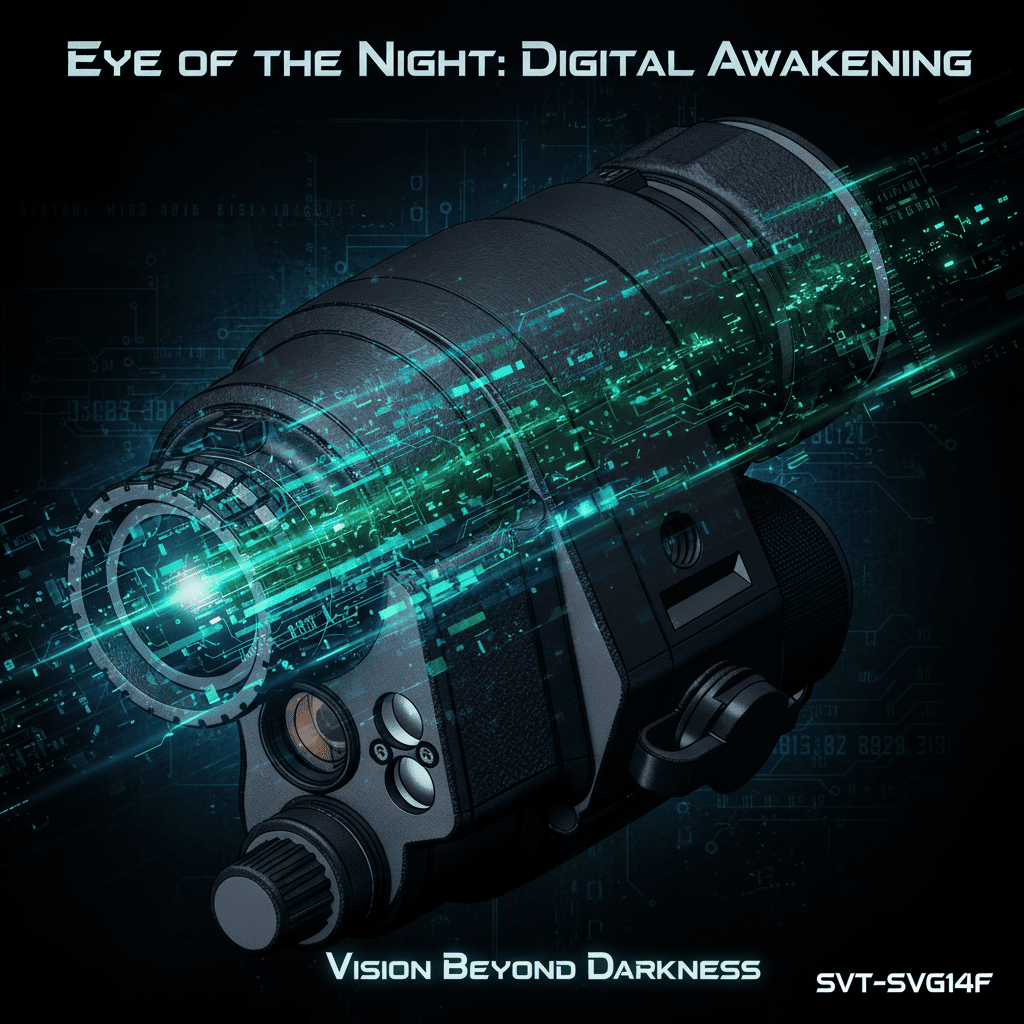The Most Complete and Detailed Technical Dissection of Digital Full-Color Night Vision Devices
Time: 2025-11-05
Read: 46
Core Information Summary of Digital Full-Color Night Vision Monocular

I. Technical Principle
It mainly relies on digital image sensors (such as CMOS sensors) and digital signal processing technology. The imaging process is as follows:
1. In low-light environments, the sensor captures weak photons and converts them into electrical signals.
2. The electrical signals are amplified, denoised, and color-restored through digital signal processing algorithms.
3. When there is faint light in the environment, a full-color image close to the real scene is generated; when there is no light at all, it switches to a low-brightness black-and-white image.
4. High-end products are equipped with core functions such as automatic gain, frame accumulation, highlight suppression, and digital noise reduction:
◦ Automatic Gain: Adjusts the signal gain according to the intensity of ambient light to ensure appropriate image brightness. ◦ Frame Accumulation: Overlays multiple frames
of images to enhance details and clarity.
II. Performance
1. Image Clarity and Detail Presentation
• Advantages: In low-light environments, it has better resolution and imaging details. Some high-end products have a sensor resolution of up to 1920x1080, which can clearly show the
texture and outline of objects. In low-light urban environments, the imaging effect is better than that of the PVS14 equipped with a Gen 2+ image intensifier, providing more abundant
visual information.
• Disadvantages: In a completely lightless environment, the image brightness and clarity will decrease significantly without the help of infrared fill light.
2. Field of View
• General Situation: The field of view is relatively small. For example, the field of view of some products is 33° (inner circle in a rectangle), so you need to turn your head frequently
to expand the field of view during observation.
• Improvement Direction: Some products gradually expand the field of view through special optical design or digital stitching technology.
3. Response Speed to Ambient Light Changes
• Disadvantages: When the ambient light changes, it takes 1-2 seconds to adjust the image parameters for adaptation. In scenes with rapid light changes, temporary blurriness or brightness
abnormalities may occur.
4. Fill Light Requirements and Influences
• General Situation: Relying on the low-illumination performance of high-end sensors (minimum illumination up to 0.00005 lux) and functions such as automatic gain and frame accumulation,
no additional fill light is required.
• Special Situation: In extreme environments such as completely lightless enclosed rooms, infrared fill light is needed. However, the fill light will form an obvious light source in the eyes of users
of image intensifier night vision devices, which may expose their position.
III. Functional Features
1. Imaging Color
• Core Advantage: It has full-color imaging capability. When there is faint ambient light, it presents full-color images, which are close to the visual perception of real scenes. It can quickly
distinguish objects through color differences and improve the accuracy of judgment.
2. Recording and Transmission Functions
• Recording: Supports internal recording, and can store images/videos in internal storage media such as SD cards for easy later viewing and analysis.
• Transmission: Some products have wireless transmission functions, which can be connected to mobile phones, computers and other devices to share observation content in real time.
3. Other Functions
• Digital Zoom: Can zoom in on the observation target for detailed viewing.
• Auto-Focus: Ensures clear imaging of targets at different distances.
• GPS Positioning (for high-end products): Integrates positioning function to facilitate recording of observation position information.
IV. Usability and Adaptability
1. Size and Weight
• Advantage: Lightweight and portable. For example, the total length of some products is only 16 cm and the weight is 300 grams, which is suitable for long-term hand-holding or carrying.
It has more advantages in scenarios that require flexible movement, such as outdoor adventures and law enforcement patrols.
2. Wearing and Operation Methods
• Wearing: Supports head-mounted, hand-held, or installation on helmets, weapons and other equipment, adapting to a variety of usage scenarios.
• Operation: The interface is simple and intuitive, and function settings can be completed through buttons or touch screens, making it easy for beginners to use.
3. Adaptability to Different Environments
• Advantage: Performs well in low-light (non-completely dark) environments, and is suitable for natural and man-made environments such as urban streets and rural fields.
• Disadvantages: The imaging effect is seriously affected in strong light environments, and the equipment may even be damaged. Performance may fluctuate in extreme environments such
as high temperature and high humidity.
V. Price and Cost
1. Product Price
• Overall Positioning: The price is affordable. Mid-to-low-end products are mostly a few hundred to several thousand yuan, suitable for price-sensitive ordinary consumers and small
enterprises/organizations with limited budgets.
• High-end Products: High-end models with high resolution and multiple advanced functions may be priced similarly to some mid-to-low-end thermal imaging night vision devices.
2. Maintenance Cost
• Routine Maintenance: Simple and easy to operate, mainly including routine operations such as software updates and lens cleaning.
• Fault Repair: Common hardware faults can be solved by replacing modular components with low cost; when core components (such as image sensors) are damaged, the repair cost is
relatively high.

SVT innovated the digital full color night vision goggles with the cut-of-edge AI technology to refine the new height of digital night vision imaging

 Chinese
Chinese

